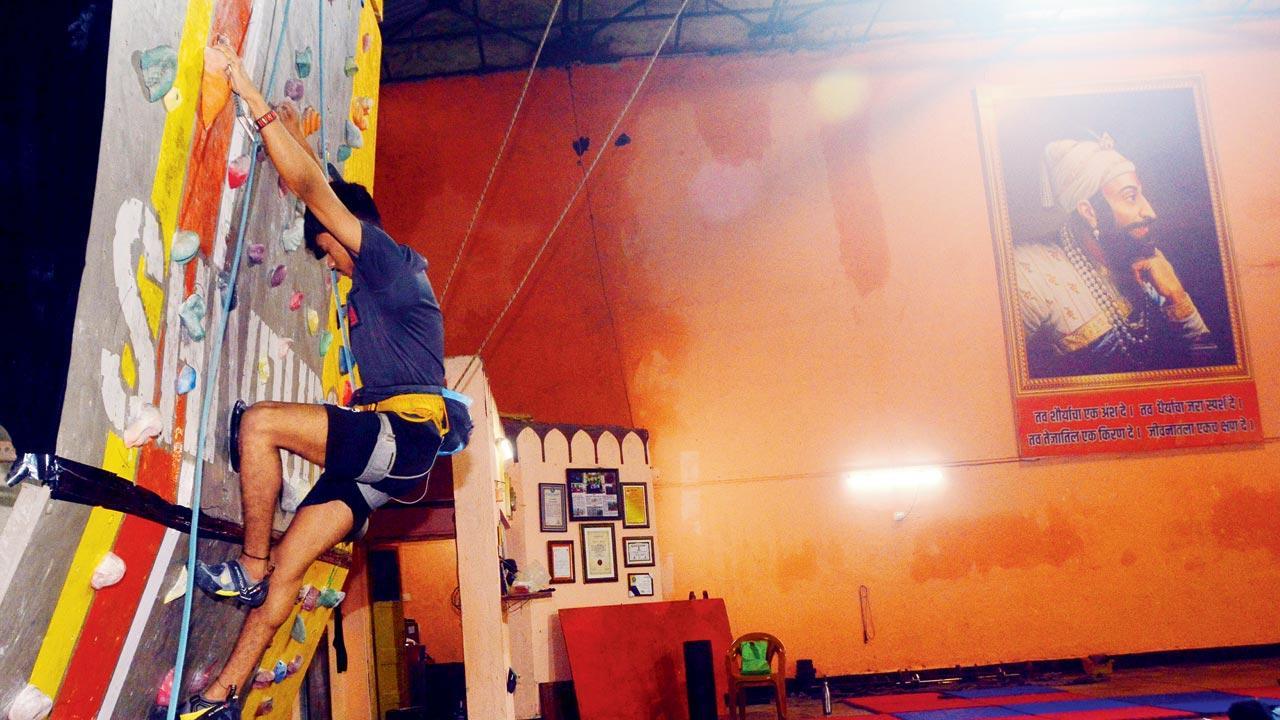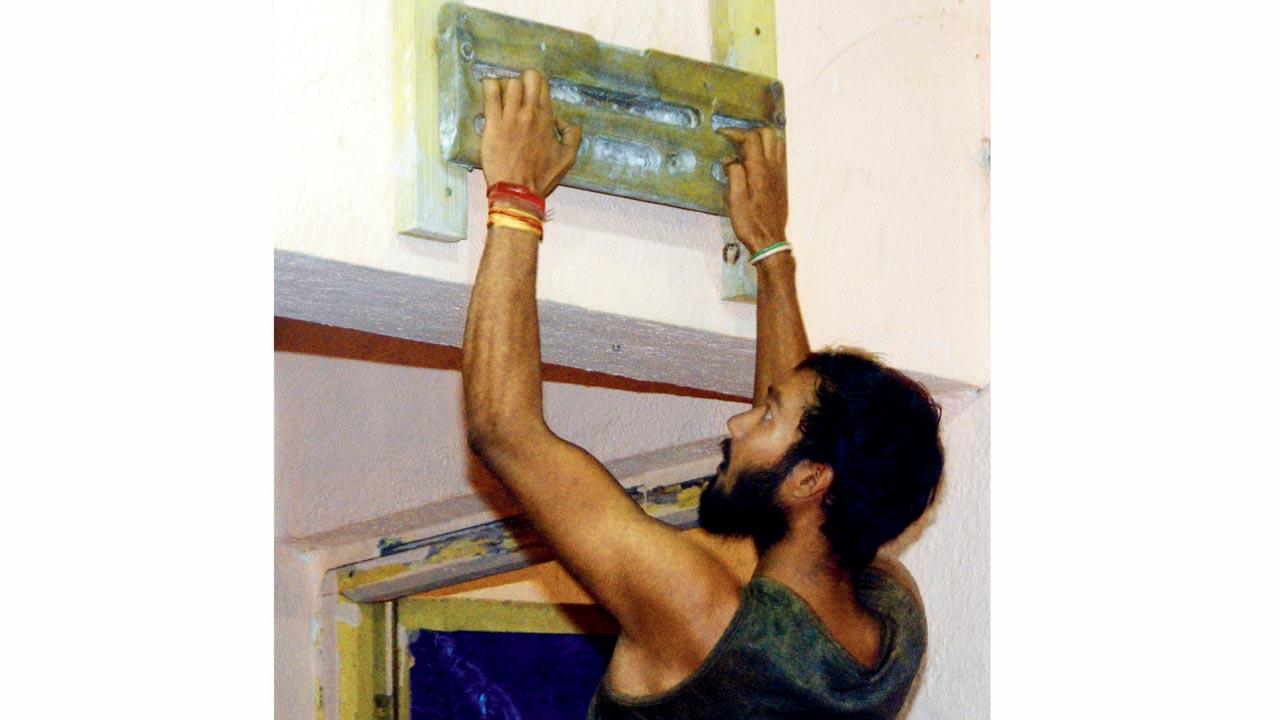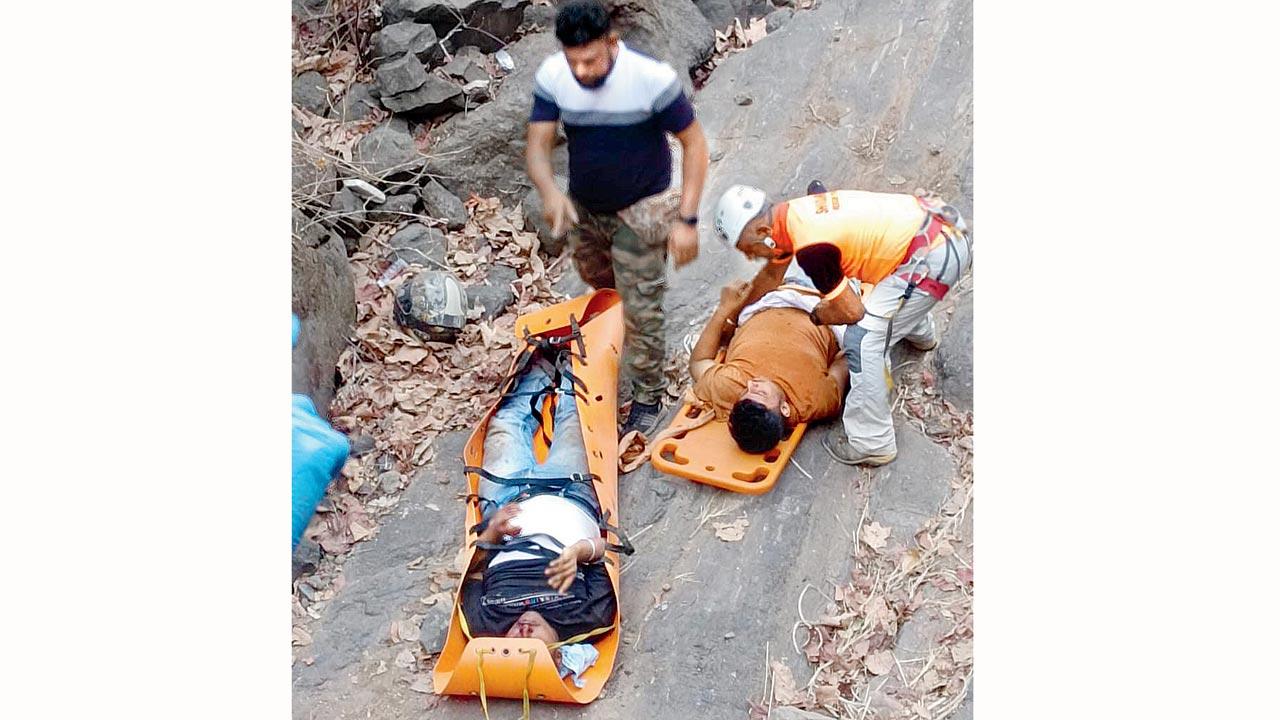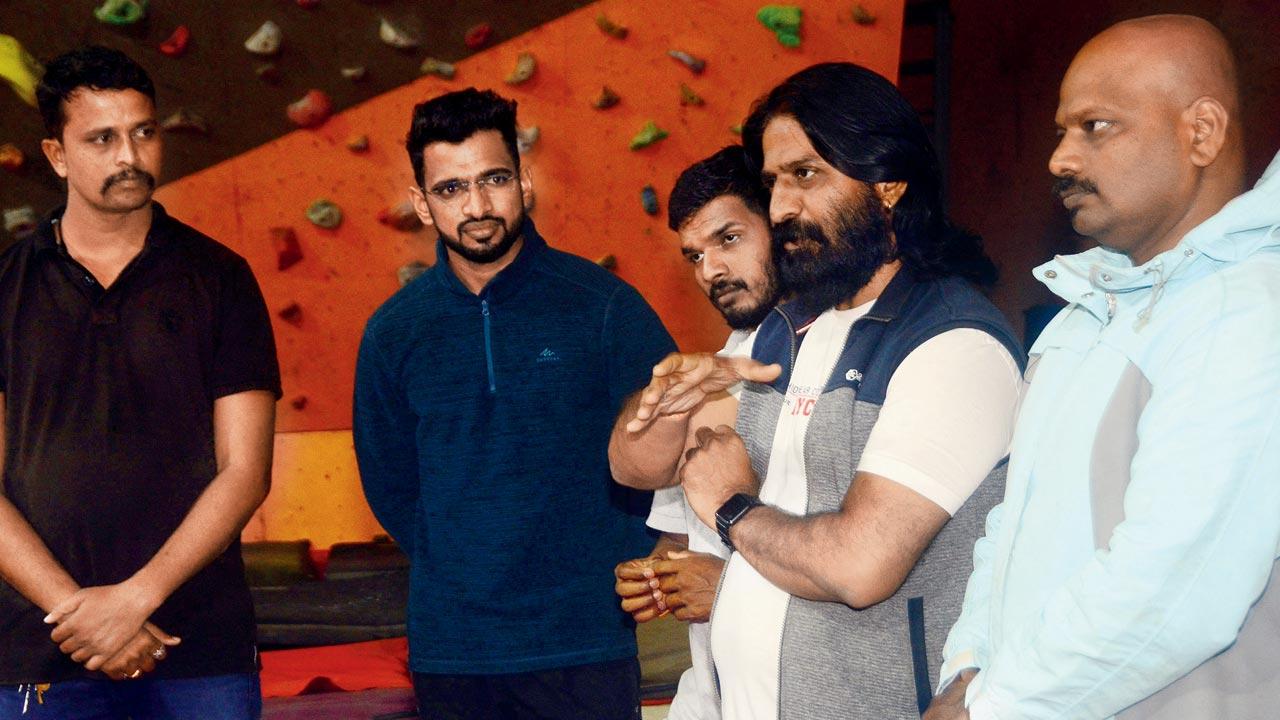How a bunch of trekking enthusiasts in Lonavla came together to create armies of trained search and rescue specialists who navigate accident-prone tourist hotspots in Maharashtra

National rock climbing and highlining champion Ayush Vartak practices the sport at the Shivdurga Mitra Mandal’s training centre in Lonavla. Apart from athletes, the centre has been training residents of accident-prone trekking and hiking hotspots in Maharashtra to create local armies of rescue workers to help in times of accidents and calamities. Pics/Satej Shinde
Early this year, a team from Shivdurga Mitra Mandal, a climbing and rescue organisation based in Lonavla, was called to Naneghat to assist with a search operation. A man had gone missing from the popular trekking destination on January 11, and his two-wheeler was found abandoned near the edge of the valley a day later. When consistent attempts at finding him failed, the authorities turned to Shivdurga, whose volunteers reached the ghat on January 19.
ADVERTISEMENT
“We scoured the entire area for hours till we found two bottles of poison and a half-eaten packet of chips at one spot. We reasoned that this could be where he jumped off, and started climbing down the cliff from there,” says 50-year-old Sunil Gaikwad, who heads the Mitra Mandal. Their hunch proved right; they found his body and brought it up the cliff, so that it could be handed over to his kin.
 Climber Ratan Singh does finger push-ups at the training centre. Rock climbing requires every muscle in the body to be at its fittest for optimum performance
Climber Ratan Singh does finger push-ups at the training centre. Rock climbing requires every muscle in the body to be at its fittest for optimum performance
Founded in 1980, the Shivdurga Mitra Mandal started as a training centre for hikers and trekkers. But an experience in his later years, says Gaikwad, raised a lot of concerns and led to what the group is today. “I’ve always been a trekking and hiking enthusiast and have a lot of like-minded friends. In 2001, 42 of us went on a trek to the Jivdhan Fort in Pune. There is one side of Jivdhan that many people couldn’t traverse back then, because the stairs were broken and there were sheer rock faces 30 to 40 feet in height, which were difficult to scale. We decided to go up through the easier route and come down through this harder one,” Gaikwad recalls. On the way, Gaikwad met three trekkers from Mumbai who had the same intention and they decided to trek together. However, by the time they reached the summit, it was night and they found themselves absolutely incapable of making it down to the foot of the hill. The group spent the night in a cave near the fort and returned the next morning.
“We realised that proper, technical climbing was a lot harder. So, we bought a lot of literature to teach ourselves the technique. At the same time, we got in touch with trained instructors and started a training centre in Lonavla,” says Gaikwad.
 The group has been at the forefront of search and rescue efforts during every major calamity, including the Malin landslide in 2014 and the floods in Sangli and Kolhapur. Pic Courtesy/Shivdurga Mitra Mandal
The group has been at the forefront of search and rescue efforts during every major calamity, including the Malin landslide in 2014 and the floods in Sangli and Kolhapur. Pic Courtesy/Shivdurga Mitra Mandal
Twenty two years on, Shivdurga Mitra Mandal has produced a national rock climbing champion, set a record by scaling the Shoshala peak (4,700 metres) in the Himalayas in 2021—it was last scaled by an Indian team in 2011—and has developed into the largest training centre in Lonavla. One of their bigger achievements, though, was in 2002, when they were first called to assist with a rescue effort at Lion’s Point in their hometown. A vehicle had lost control and hurtled down the 1,000-foot cliff, and the local administration needed trained climbers to salvage the bodies of the victims.
The experience showed Gaikwad and his teammates that there was a serious dearth of trained climbers in Lonavla, which witnessed scores of accidents every year, especially during the monsoon, when roads are slippery and visibility is low. As a result, he registered Shivdurga as a non-profit and started teaching volunteers free of cost. They also became the go-to organisation for local authorities. “All the work we do, and the training we provide, is absolutely free of cost. We need to keep in mind that we’re responding to requests by people who have lost their family members, and we do not, for a second, want them to think about how much they have to pay and whether they can afford it,” he says.
 (From left) Sagar Kumbhar, Omkar Padwal, Yogesh Umbre, Sunil Gaikwad and Mahesh Masne form the core group of the Shivdurga Mitra Mandal
(From left) Sagar Kumbhar, Omkar Padwal, Yogesh Umbre, Sunil Gaikwad and Mahesh Masne form the core group of the Shivdurga Mitra Mandal
At the forefront of the rescue activities are Gaikwad’s friend Sagar Kumbhar, Yogesh Umbre, Mahesh Masne and Omkar Padwal. Since 2002, they have not only trained volunteers in Lonavla, but also local residents of popular spots like Khandala, Matheran, and Mahabaleshwar.
“Training in rescue work requires coaching of the body as well as the mind,” says Umbre. “You need to not just know the area well, but also be able to visualise the best spots to search, anticipate changes in weather and their effect, be able to climb up and down steep rock faces, and take care not to cause any more harm to an already injured victim.” Climbing, he says, requires immense physical fitness, but even those who are not trained can help with ferrying equipment and other peripheral tasks. “The idea is to have a complete and well-equipped team.”
Also, Kumbhar adds, you need to be able to handle a dead body. The tragedy of their work, they say, is that more often than not, they end up only recovering bodies, instead of saving victims. “Our work is focused around high rock faces and a fall from that height means almost certain death. By the time a rescue team finds it, the body has started to decompose and because of how brutal such a fall can be, it is contorted and badly damaged. This is something that you can either do or you can’t,” says Kumbhar.
They have also diversified, and now conduct search and rescue operations underwater using trained scuba drivers and rescue animals stuck in floods or injured in accidents. “Villagers often tie up their livestock, but forget to untie them when a flood happens. We have rescued so many animals in that condition, and bringing them to safety from the middle of a flooded village is challenging, especially because they are alive and panicky,” says Padwal.
Over the years, Shivdurga has also updated its own equipment, like the best ropes and hooks, as well as stretchers that can effectively carry a victim up a steep cliff, while at the same time supporting their spine and other vital organs.
They were at the forefront of the rescue efforts in Sangli and Kolhapur in 2021, the Malin landslide in 2014, and countless instances of tourists and trekkers falling off the edge of a cliff. “The problem is social media,” says Mahesh Masne, “Instagram Reels have brought a lot of fame and attention to trekking hotspots, increasing the footfalls there. But we see no effort on part of these influencers to also put across the fact that trekking and hiking should be done after a lot of research and preparation. People just make plans and flock to these places, but forget the basics of their own safety.”
To drive the point home, Gaikwad adds, “Recently, we recovered the body of a man who was overweight. It is a very basic fact that trekking is for the physically fit. But when you just watch an Instagram Reel or a YouTube video, this is what you get. We’ve seen cases where people fell because they were distracted while taking a selfie or lost their balance while trying to recover their earphones that fell off the safety railing.”
Besides, Shivdurga is also the go-to for police authorities when it comes to evidence recovery. Over the last 10 years, they have recovered dead bodies, firearms and mobile phones that were tossed down a cliff or into the sea by murder accused. “In a murder case registered in Shiroor, the police needed to recover the mobile phone of the victim, as it had crucial evidence. The accused had confessed to tossing it in the Bushi dam, but we searched for hours and couldn’t find it. When we took a break for lunch, we decided we’d tell the police that the accused may have lied to mislead the probe,” recalls Gaikwad. However, just as they completed their lunch, a police constable came up to them with an old, defunct phone. He stood at the exact spot where the accused said he had stood, and threw the defunct phone into the dam, effectively marking out an area for the search team to focus on. “We dived back in and found not only the defunct phone, but also the victim’s phone that the police needed from the same area, buried under seaweed and silt,” shares Gaikwad.
 Subscribe today by clicking the link and stay updated with the latest news!" Click here!
Subscribe today by clicking the link and stay updated with the latest news!" Click here!







